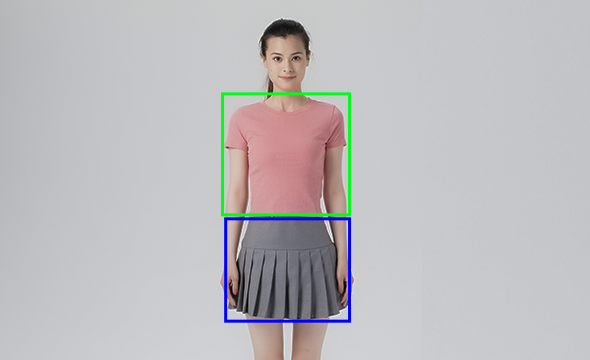➤ AI in Retail: Applications and Growth
Swift development of artificial intelligence has being pushing revolutions in all walks of life, and the function of data is crucial. In the training process of AI models, high-quality datasets are like fuel, directly determines the performance and accuracy of the algorithm. With demand soaring for intelligence, various datasets have gradually become core resources for research and application.
With the rapid development and continuous improvement of AI tools and technologies, the new retail era has arrived. According to the research report, China’s AI retail market will grow by 31.45% year-on-year in 2022, with a CAGR of 35.69% during the forecast period.
Compared with traditional retail, new retail is based on the Internet. By using advanced technologies such as big data and artificial intelligence, it upgrades and transforms the production, circulation and sales processes of commodities, thereby reshaping the business structure and ecosystem, and has a new retail model that deeply integrates online services, offline experience and modern logistics.
As the concept of “new retail” spreads globally, many world retail enterprises are applying AI technologies such as computer vision and NLP to unmanned stores and warehouses or virtual stores, and accelerating supply chain upgrades to enhance customer’s shopping experience.
The Application of AI in Retail
➤ AI in Retail and Nexdata
1. Establish a user information database
The establishment of a user information database is that retailers classify users’ identities through AI. AI collects and organizes data such as user identity information and purchase records. The more data is collected, the more complete the understanding of users will be, which is more beneficial for retailers to conduct targeted marketing and develop personalized services for specific groups.
2. Predict user consumption behavior
After understanding the user’s identity information and purchase records, the retailer can accurately determine the user’s purchasing preferences, purchasing habits and shopping patterns through AI, and can predict the user’s purchasing behavior. For example, when a user searches for a product, “similar products” will automatically appear on the page, which can reduce the time and effort consumers spend browsing products.
3. Intelligent inventory management
Retailers can use AI to manage warehouse inventory, control costs based on increases or decreases in inventory, and optimize inventory management with accurate forecasts of consumer demand.
4. Supply chain optimization
Retailers can use AI to predict the correct supply and demand relationship based on data on different products, marketing behaviors, seasonal factors, etc., so as to optimize logistics management and arrange funds and personnel more reasonably and effectively.
5. Use face recognition for crowd detection
Face recognition can be used to determine the user’s identity, and then based on the user’s personal information and purchase data, through the background data of the handheld smart device in the hands of the shopping guide, it can provide a one-stop solution for the user to go to the store. While monitoring retail venues, statistics and analysis are carried out on the customer flow, age, gender, and shopping needs of the users who arrive at the store, so as to calculate the number and density of users.
6. Product identification
Product identification can be used in unmanned retail. Commodity identification completes unmanned charging for users by identifying changes in commodity information on the shelf, which can reduce labor costs and is very convenient. At the same time, product identification can also avoid missed scanning behavior of products, and prevent store products from being lost due to theft or human error, resulting in unscanned goods at checkout.
7. Virtual fitting mirror
AI can also play the role of information output in clothing retailing. It can virtualize fitting mirrors, so that people can quickly find clothing that suits them without going to the store.
8. Delivery robots
As the last link of terminal distribution in the entire retail logistics system, the distribution robot under AI has the advantages of intelligence, high load, and all-weather work. For example, unmanned delivery vehicles can recognize the external environment, and use the real-time monitoring and location positioning of the console to ensure that the goods can be delivered safely and effectively.
➤ Data description in datasets
As the world’ s leading AI data service provider, Nexdata has developed over 200 computer vision datasets, covering 2D/3D human face, human body, face anti-spoofing, gestures and etc., to help customers improve the accuracy of AI models and achieve the transformation from traditional retail to new retail. Nexdata strictly abides by the relevant regulations, and the data is collected with proper data collection authorization agreement.
Multi-race and Multi-pose Face Images Data
This dataset includes Asian race, Caucasian race, black race, brown race and Indians. Each subject were collected 29 images under different scenes and light conditions. The 29 images include 28 photos (multi light conditions, multiple poses and multiple scenes) + 1 ID photo.
Multi-class Fashion Item Detection Data
In this dataset, 19,968 images of male and 124,842 images of female were included. The Fashion Items were divided into 4 parts based on the season (spring, autumn, summer and winter). In terms of annotation, rectangular bounding boxes were adopted to annotate fashion items.
3D Living_Face & Anti_Spoofing Data
The collection scenes include indoor and outdoor scenes. The dataset includes males and females. The age distribution ranges from juvenile to the elderly, the young people and the middle aged are the majorities. The device includes iPhone X, iPhone XR. The data diversity includes various expressions, facial postures, anti-spoofing samples, multiple light conditions, multiple scenes.
3D Instance Segmentation and 22 Landmarks Annotation Data of Human Body
The dataset diversity includes multiple scenes, light conditions, ages, shooting angles, and poses. In terms of annotation, we adpoted instance segmentation annotations on human body. 22 landmarks were also annotated for each human body.
End
If you need data services, please feel free to contact us: info@nexdata.ai.
The future of AI is highly dependent on the support of data. With the development of technology and the expansion of application scenarios, high-quality datasets will become the key point to promoting AI performance. In this data-driven revolution, we will be able to better meet the opportunities and challenges of technology development if we constantly focus on data quality and strengthen data security management.








 Previous
Previous Next
Next




